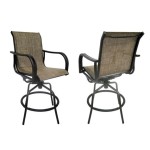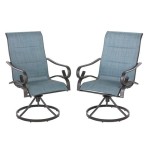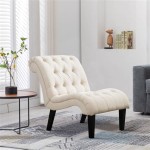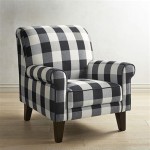The Significance of Dining Room Chair Height
The height of a dining room chair is a critical factor influencing comfort, ergonomics, and the overall aesthetic of a dining space. A chair that is too short or too tall can lead to discomfort during meals, impacting posture and potentially causing strain over time. Understanding the standardized measurements and the factors that contribute to an appropriate chair height are essential for creating a pleasant and functional dining environment.
This article will delve into the standard height of dining room chairs, exploring the variables that can influence the ideal height, and providing guidance on how to select chairs that complement a dining table effectively. Topics covered will include the relationship between table height and chair height, the importance of seat height, and considerations for armrests and individual preferences.
Standard Dining Room Chair Height and Its Rationale
The generally accepted standard for dining room chair height ranges from 17 to 20 inches (43 to 51 cm) from the floor to the seat. This measurement is based on average human anatomy and provides a comfortable seating position for most individuals. The rationale behind this standardization lies in the goal of achieving a proper leg angle and allowing sufficient clearance between the thighs and the table apron (the horizontal support structure beneath the tabletop).
When a chair falls within this recommended range, users can typically sit with their feet flat on the floor and their knees bent at a 90-degree angle. This posture promotes proper circulation and reduces strain on the back and legs. Deviations from this standard, whether higher or lower, can disrupt this ergonomic balance, leading to discomfort during extended periods of sitting.
Furthermore, the standardized height allows for adequate space between the chair seat and the underside of the table. This clearance is essential for comfortable leg movement and prevents the feeling of being cramped while seated. Tables are typically designed with an apron height that accommodates chairs within this range, ensuring a harmonious and functional relationship between the two pieces of furniture.
However, it is important to acknowledge that these are generalized guidelines. Individual body types and preferences can influence the ideal chair height. Those with longer legs may benefit from slightly taller chairs, while shorter individuals may find lower chairs more comfortable. The goal is to find a chair height that allows for a natural and relaxed posture while seated at the dining table.
The Relationship Between Table Height and Chair Seat Height
The relationship between dining table height and chair seat height is paramount in achieving a comfortable dining experience. A general rule of thumb dictates that there should be approximately 12 inches (30 cm) between the top of the chair seat and the underside of the table. This spacing allows for adequate legroom and prevents uncomfortable contact between the thighs and the table apron.
Standard dining tables typically range in height from 28 to 30 inches (71 to 76 cm). Consequently, chairs within the 17 to 20-inch seat height range are generally well-suited for these tables. However, variations in table height are common, particularly with custom-made or antique tables. When selecting chairs for a non-standard table, precise measurements are essential to ensure a comfortable fit.
To determine the appropriate chair height for a specific table, the following steps should be taken: first, measure the height from the floor to the underside of the table apron. Then, subtract approximately 12 inches from this measurement. The resulting number represents the ideal chair seat height. It is advisable to allow for a slight margin of error, as individual comfort preferences may vary.
Furthermore, it is crucial to consider the thickness of the tabletop. A thick tabletop can reduce the available legroom if not accounted for. In such cases, a chair with a slightly lower seat height may be necessary to maintain the optimal 12-inch clearance.
In situations where a table's height is significantly different from the standard, adjustments may be required. If the table is too low, consider raising it with table risers or custom legs. Conversely, if the table is exceptionally tall, it may be necessary to have custom chairs made to ensure a comfortable seating height.
Considering Armrests and Individual Preferences
While standard chair heights provide a baseline for comfort, the presence of armrests and individual ergonomic needs can influence the ideal chair selection. Armrests can add to the overall comfort of a dining chair, but they also require careful consideration in relation to table height and individual body size.
The height of the armrests should allow them to comfortably fit under the table apron when the chair is pushed in. If the armrests are too high, they will prevent the chair from being fully pushed under the table, potentially obstructing movement around the dining area. To measure for armrest clearance, measure the height from the floor to the top of the armrest and compare it to the height from the floor to the underside of the table apron.
In addition to clearance, the width between the armrests should be sufficient to accommodate the user's body size comfortably. Narrow armrests can feel restrictive, while excessively wide armrests can make it difficult to reach the table. Consider the average body size of the individuals who will be using the chairs when selecting chairs with armrests.
Individual preferences also play a significant role in determining the ideal chair height. Factors such as posture, back support needs, and personal comfort preferences should be taken into account. Some individuals may prefer a more upright seating position, while others may prefer a slightly reclined posture. It is advisable to try out different chair heights and styles to find the most comfortable option.
For individuals with back pain or other postural concerns, chairs with lumbar support or adjustable features may be beneficial. These chairs can be customized to provide optimal support and comfort, regardless of the standard chair height recommendations. Consulting with an occupational therapist or ergonomic specialist can provide valuable guidance in selecting chairs that meet specific health needs.
Finally, the aesthetic of the dining space should also be considered when selecting chairs. While comfort is paramount, the chairs should also complement the overall design and style of the dining room. The color, material, and design of the chairs should harmonize with the table and other furniture in the room, creating a visually appealing and cohesive space.
In conclusion, mindful consideration of standard height guidelines, table height, armrest considerations, and individual preferences is the key to selecting dining room chairs that enhance both comfort and the overall dining experience.

What Is The Ideal Dining Table And Chair Height

How To Pick The Right Dining Chair Height Inside
Optimal Sizes For The Dining Room Kitchen Furniture Urban Quarter

What Is The Ideal Dining Table And Chair Height

Dining Table Height Chair

Dining Pub Chair Seat Height Comparison Find The Perfect Fit Amish Furniture Factory

Dining Chair Dimensions

The Ultimate Guide To Dining Chair Size Height Width

Dining Table Chair Height Ultimate Guide

What Is The Ideal Dining Table And Chair Height







